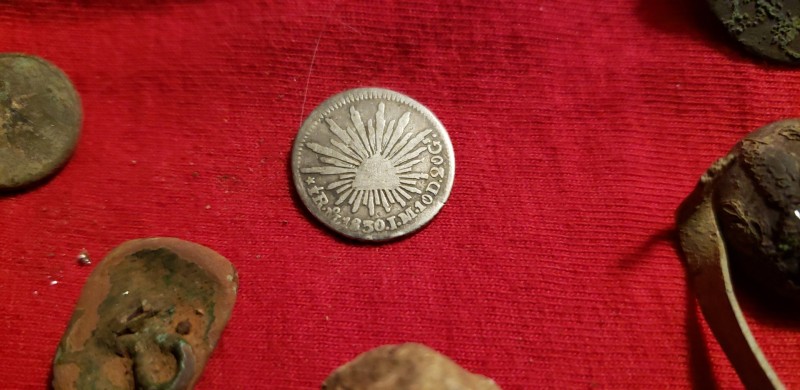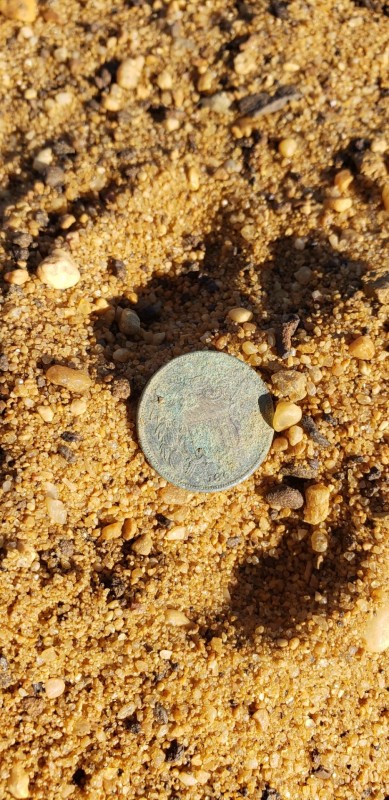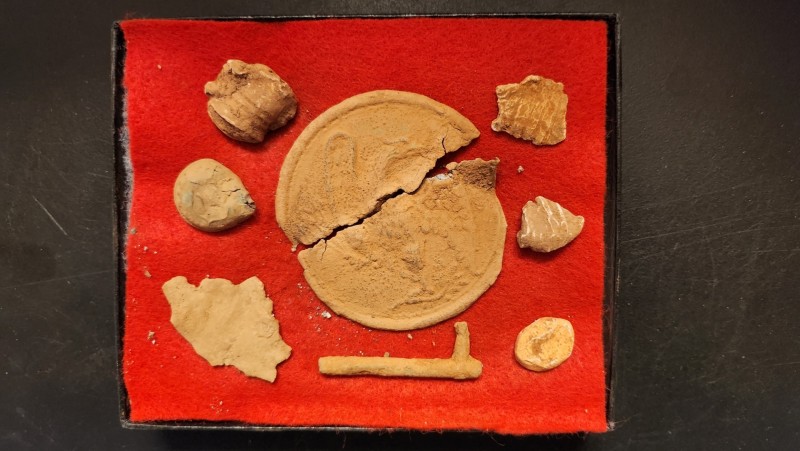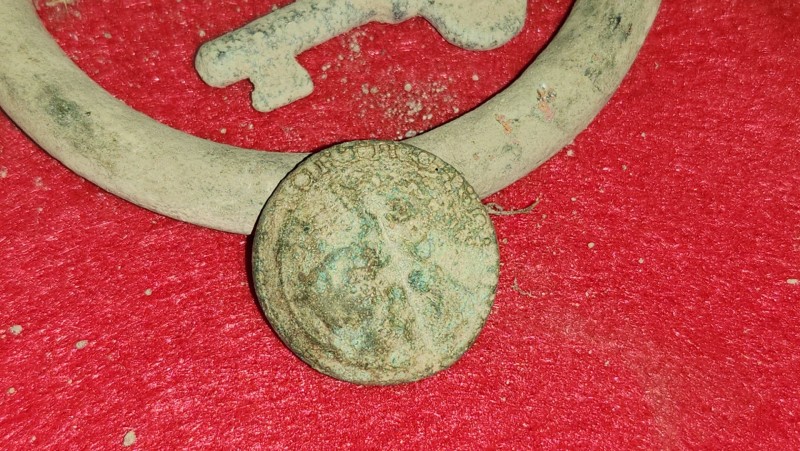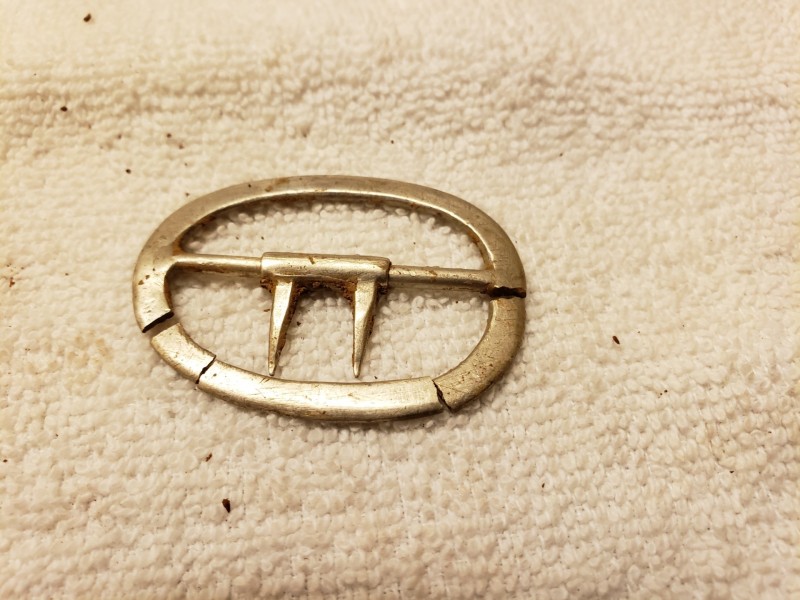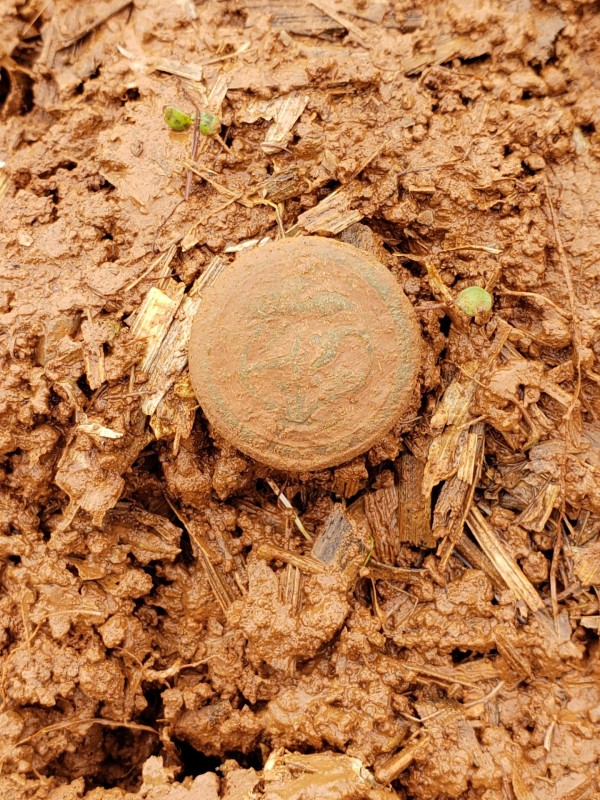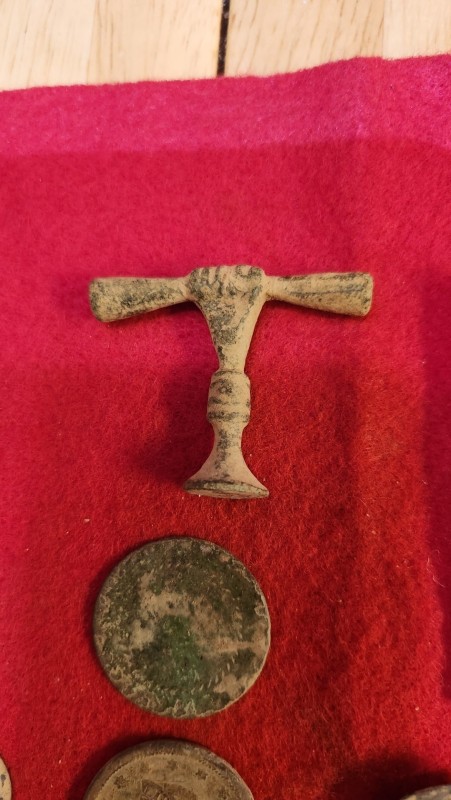-
Posts
6,131 -
Joined
-
Last visited
Content Type
Forums
Detector Prospector Home
Detector Database
Downloads
Everything posted by Chase Goldman
-

Not Much Interest In USA Units Lately
Chase Goldman replied to bigtim1973's topic in Metal Detector Advice & Comparisons
Plenty of engineering talent right here in the USA. Problem is so many other industries are sucking up engineers from the shrinking talent pool (yes there are fewer people entering into college engineering programs every year) and there is no way someone like Garrett can compete compensation-wise for that talent since we are talking basically about designing toys (that’s right people, toys) vs. multibillion dollar behemoths like Google, Amazon, Meta, Tesla, etc. that are working on deploying the real Skynet from the Terminator series. Foreign talent is not necessarily better and frankly someone is not going to come over here just to work for Garrett when they can work for someone else I just mentioned. Someone earlier talked about eventually hitting a technology wall. Guess what, we basically hit that wall years ago. Induction Balance technology is effective but an ancient and crude way to ascertain the nature of a buried piece of metal and now we are just squeezing drops of performance out of it by upping processing speed (where do you go once you can process a signal as fast as a human can swing a coil) and doing some real backflips with signal processing technology and simultaneous frequencies. But we’re just polishing a cannonball at this point, not really innovating. Furthermore, the noise floor continues to rise with the proliferation of wireless communication and control technology that it is becoming harder for designers to cut through the EMI similar to how light polllution and SpaceX satellite constellations are ruining visual astronomy. As Steve says, now that Axiom is out there and appears to be successful, Garret (the only viable US detecting manufacturer with an active R&D presence) needs to pivot back and build off APEX which was a low risk way for Garrett to dip their toe into SMF (set expectations low by introducing it as part of your entry level ACE lineup) and refresh their mid and flagship level offerings. Also, where is the hobby headed? Relics and gold are not replenished and coinage and jewelry are disappearing as we are now content to buy stuff with our phones and wear non-metallic silicone SafeRingz instead of gold wedding bands. Anyway, it’s pretty obvious why the US is lagging in VLF detector innovation. So the question is whether it’s too late for Garrett to get back into the game. FT is content to continue serving up warmed over pink and purple variants of detectors they designed more than 10 to 15 years earlier. I’m a firm believer that location vice detector technology is key to growing the hobby or facilitating individual success. Harnessing technology and AI to facilitate site research and access as well as for assuring swing coverage my do more to reinvigorate the hobby than incremental improvements in induction balance detector technology (though introducing machine learning into the detector technology mix might be the next game changer). My nonsensical ramblings, FWIW. -

Your Most Unusual (identified) Relics.
Chase Goldman replied to Bootscrape's topic in Metal Detecting For Coins & Relics
I'll clean brass to get obvious loose dirt off, if it can bring out more design detail, help with identification and the risk/consequence of damage is low. Otherwise, I've found that leaving something like that as is helps preserve the patina and character of the find, especially if it is uncommon and if I don't want to risk damage. I also tend to not "repair" damaged finds, preferring to leave them as I found them. Here are two examples: a split Eagle Breast Plate and a fractured pure silver shoe/sash buckle. I was just happy in both cases to retrieve all pieces of these relics from the field. BTW I consider some relics unusual not because of what they are but because of where they were found. Here's a Two Cent piece I found in the fill sand on a public beach that certainly did not exist in the mid-1800's (probably was dropped wherever the fill originated from). Was totally unexpected. Here's a First Republic of Mexico 1830 Half Reale I found in an Eastern PA cornfield: Here's a CW Era Navy Button found in a random VA cornfield far from any Navigable body of water (perhaps dropped by a previous landowner who served or a sailor who was participating in the CW engagements in the area). Similar Story with this North Carolina Regimental Coat Button found in Virginia's Northern Neck far from any CW engagement activity. Sometimes I wish these relics could talk so they could tell us how they came to end up in the places where they were found. -

Your Most Unusual (identified) Relics.
Chase Goldman replied to Bootscrape's topic in Metal Detecting For Coins & Relics
This is a 17th to 18th century tobacco pipe tamper (above a fancy colonial flat button) with a hand grasping a scroll symbology meaning the pipe bearer was likely highly educated. -
The Garrett Pro Pointer AT (aka the “Carrot”) is a fine water-resistant, general purpose PP and a popular choice.
-

Interesting Tid Test: Beach Sens Vs Dive
Chase Goldman replied to ColonelDan's topic in XP Deus II Forum
I'm with you Dave. We hunt in vastly different environments so we are going to have different perspectives on D2 machine behavior. So I don't dispute yor observations on fringe targets in saturated salt sand with black sand mineralization. I have similar concerns in heavy soil mineralization but overall ID depth suffers to the point that nuances in mode IDs are a moot point - I usually go with a PI at that point. In mild soil, and full tones, in my experience, a high conductor tone can ring through even if visual TID is getting depressed from co-located iron. I really just wanted to point out regarding your comment that the video showed poor D2 tonal performance because the on-camera operator was struggling because of dependence on iffy visual TID to attempt to discern the nature (conductivity) of two different non-ferrous targets at depth - which is purely a drawback to using PITCH which has no tone ID capability other than ferrous vs. non-ferrous. Again, not disputing whether D2 reliably indicates ferrous vs. non-ferrous tones at fringe depths in deep wet salt sand. You have vastly more experiencece than me in that situation. -

Weird 1967 Quarter Found.
Chase Goldman replied to Sirius's topic in Metal Detecting For Coins & Relics
This is sound advice for all who participate in asking for and dispensing advice, Chuck, regardless of where you stand on the present subject at hand. Thanks for articulating it so well. I often have to step back and look in the mirror and regain that sense of self-awareness as to whether I'm preaching or just trying to win an unwinnable debate solely for the sake of winning or being proven right, even if it’s only in my own mind. -

Weird 1967 Quarter Found.
Chase Goldman replied to Sirius's topic in Metal Detecting For Coins & Relics
Sirius - just one last follow up. As I read through your replies, especially the last one, it is not clear to me whether you still think the quarter is silver or even valuable or just a unique strike on the wrong metal or a no-value counterfeit. You were willing to scratch up the edge after visiting the coin dealer, after all. So your unwillingness to destructively test the coin further might just be that it is not worth the trouble to confirm whether or not the core is actually copper at this point (though you apparently do think there is no copper there) and not because you think it has collectable value. I get that. But at this point, i think that is the only way to be sure. However, if you still want it to be accepted by the CoinStar machine, definitely let it be. -

Weird 1967 Quarter Found.
Chase Goldman replied to Sirius's topic in Metal Detecting For Coins & Relics
Reminds me of when I was first getting into relic detecting. I recovered a highly corroded ferrous target at a farm site. It was a hook or something. It was non-descript in terms of being able to tell whether it was CW period iron or modern farm junk. I asked my detecting buddy if he thought it was a CW period relic. Knowing that 1) it had no distinguishing features that could conclusively date the item and 2) it had basically no collectable value either way - he replied, "It is if you want it to be." Never forgot that and it injected some reality into my idealistic sense of what relic and treasure detecting is all about and the very small potential that any given unidentifiable target I pull out of the ground is some unique relic treasure. FWIW. -

Weird 1967 Quarter Found.
Chase Goldman replied to Sirius's topic in Metal Detecting For Coins & Relics
Well ok then. Suit yourself. Strange you sought and then decided to basically brush off the input of a coin dealer as well as multiple experienced forum members who took the time to respond regarding the potential nature of your find. But that is certainly your prerogative. It is your find, after all. If you feel so inclined, look up Occam's Razor. The simple version of that is summed up in the saying: If it looks like a duck and quacks like a duck, it's probably a duck. Who knows, maybe there is a small possibility we're all wrong and you have something unusual there. But if you are basing it on the few hundred clad quarters you've personally seen in various corroded states since you took up detecting a few months ago, then that is a pretty weak position to consider conclusive considering all the variables and the probable millions of clad quarters that are out there exposed to the elements. If you've seen the pics of Beach Find clad here, there are no "usual suspects" regarding corrosion states and appearances regarding green copper and copper leaching. It's all over the map. If you just want affirmation of an "out there" hypothesis, versus usable input, that's fine, I guess. But forum members like to share honest advice from their experiences not just tell you what you want to hear. It's also reassuring to get confirmation your feedback is given serious consideration. I can't speak for the others who chimed in here, but from my perspective, at least, it was just a tad frustrating reading the same counter argument multiple times. 🤔 Something to think about if you plan to use the forum to get input on your next inquiry. Oh, BTW, nice pocket watch you have there that made several guest appearances throughout thread. Cheers...and happy hunting. -

Weird 1967 Quarter Found.
Chase Goldman replied to Sirius's topic in Metal Detecting For Coins & Relics
It really makes no financial sense to go through the effort to counterfeit a clad quarter. What it looks like to me is that the copper core of your quarter has circumferentially receded from the edge of the coin whose diameter is now defined soly by the Cupronickel surface clad layers. This can be explained by the fact that the pure copper is more susceptible to saltwater induced corrosion than the Cu/Ni clad layers, so there is more pure Cu metal lost. The net effect of that is that when you scratch the edge you are deforming the silver-toned Cu/Ni metal into the circumfrential void created from the receding copper core. If you instead took a file and scratched off some of the clad surface layer off the face of the coin, you might then better expose the copper core layer than scratching the edge. -

Weird 1967 Quarter Found.
Chase Goldman replied to Sirius's topic in Metal Detecting For Coins & Relics
Not sure what you are asking here (“thin layer of copper”). The two outer clad layers are 75/25 Cu/Ni alloy which has a silver/nickel appearance. There is no thin layer of copper. The core is pure copper. -

Interesting Tid Test: Beach Sens Vs Dive
Chase Goldman replied to ColonelDan's topic in XP Deus II Forum
I think we are basically in agreement but it takes a super-trained ear (explained below) to be able to discern anything more from the pitch audio alone coupled with the sketchy TID was that you had a probable symmetric, non-ferrous target as there is no obvious tone ID component in PITCH to let you know if it was a low mid or high conductive target like you have in Mukti tones or full tones. That was my point in response to Dave’s assertion that the video demonstrated D2 had poor tonal ID charisticstics. Agree that if you were digging all non-ferrous it was a dig me audio signal but without reliable visual TID, you would have difficulty differentiating a zincoln from a tab from a heavy gold ring in PITCH, though with experience, you can discern more dense/massive targets such as solid gold, silver or copper/clad or an aluminum can bottom as they will tend to give a slightly fuller, more rich sounding audio in pitch. -

Interesting Tid Test: Beach Sens Vs Dive
Chase Goldman replied to ColonelDan's topic in XP Deus II Forum
This absolutely the wrong video to use to draw conclusions as to whether the Deus 2 is a good tone ID machine because the machine is set up in PITCH tones (as evidenced by the the text overlays of machine settings and the actual audio). Other than readily distinguishing between ferrous/non-ferrous targets based on the disc setting and use of iron volume, PITCH provides basically NO target tone ID information other than audible target signal strength (and overload) and some nuanced tonal information (based on perceived tonal harmonic distortion) regarding the symmetry of the target shape (useful for differentiating face-on round targets such as coins, undamaged tabs, freshness seals, and rings vs. canslaw, aluminum tent stakes, and (unfortunately) chains. PITCH audio excels primarily as an effective way to “alert” the detectorist to the presence of a non-ferrous target (or conversely ferrous target if that is the objective) while swinging away because it is very reactive to tiny or deep non-ferrous targets vs. multi tones which are less dynamic in that regard. However, it requires the detectorist to heavily rely on visual target ID or switching to a multi-tone or full tone mode for target interrogation for more precise target identification. Bottom line is that pitch audio makes it slightly less likely you will walk over a target without hearing it but it is also slightly less effective at facilitating efficient/timely target recovery because of the reliance on visual TID/target interrogation to make a dig decision. PITCH is tailor made for those digging all non-ferrous regardless of ID and especially if combined with utilizing the visual ferrous/non-ferrous target indication on the horseshoe display. To really draw a conclusion regarding Deus 2 as a tone machine, one needs to see a demonstration of the Deus 2 in multi-tones or Full tones to determine whether you get a “good” high or mid tone at depth with either the absence of a target ID or down-averaged ID due to co-located ferrous. That’s not featured in this video nor was it the objective of the video as the focus was on mode settings impacts to visual target ID. In my experience, D2 is a great tone machine if you have the audio set up for other than pitch tone (though I consider full tones to be weak on the D2 vs. the D1). The other thing I’ve noticed about visual TID on D2 is that it is pretty rock solid and you rarely are in a situation where you are hearing just a tone without a target ID or indication on the horseshoe display to facilitate the dig decision. Although this video demonstrates how wet salt sand with perhaps the influence black sand can impact target ID accuracy based on mode. Proper setup of disc with Iron volume and utilizing the horseshoe display and Mineralization meter can also help provide clues as to whether the target IDs for a non-ferrous target are being down-averaged as a result of co-located ferrous or soil effects. FWIW -

Weird 1967 Quarter Found.
Chase Goldman replied to Sirius's topic in Metal Detecting For Coins & Relics
My assessment: 1966 clad, 1967 clad, 1967 clad But don’t take my word for it. Showing us edge pics of probable clad coins is not really going to be definitive. Have you looked at what the copper clad cores look like on non-corroded pocket change? It’s pretty highly variable. If you factor in the bi-metallic galvanic effects and other environmental elements that cause corrosion, on clad, the visual results are all over the map. So, if you still really think you have something there, you can: 1) Take to a local coin dealer and have them assess it for free. 2) Purchase a silver acid test kit. 3) Send it off to be assessed and professionally graded (PCGS, etc). 4) Run it through a Coinstar machine. If it gets rejected, it could be silver… 5) Brush the edge as suggested earlier to expose the copper core. 6) Keep it a mystery, create a semi-fictional backstory of its origin and impress your friends and family with the tale of the “rare” 1967 Quarter variant you discovered. -

Weird 1967 Quarter Found.
Chase Goldman replied to Sirius's topic in Metal Detecting For Coins & Relics
Silver coins are solid, homogeneous metal and don't have a core. That coin edge certainly looks like a core is there which is where the term clad comes from. Plus it does not look like silver corrosion but typical of clad which is highly variable because of its bi-metallic galvanic properties. There is a possibility of an issue with the metallic composition of the clad planchet resulting in an error, but unlikely its silver. -

Weird 1967 Quarter Found.
Chase Goldman replied to Sirius's topic in Metal Detecting For Coins & Relics
Which is which in the picture above? I am seeing hints of copper core on both coins' edges. Nothing really unusual that I see from the first picture. Looks like corroded clad to me. And other than special proof sets/specimens no silver quarters were introduced for circulation after 1964. -
Here's the relevant thread: @Carolina has built his own set of compatible waterproof phones for the D2, so maybe he will chime in here.
- 21 replies
-
- headphones and audio
- xp deus 2
-
(and 1 more)
Tagged with:
-
FSA - Unfortunately, Monte recently passed away. https://www.detectorprospector.com/forums/forum/4-detector-prospector-forum/
-

The New Nokta Legend 2023 Version
Chase Goldman replied to Bill (S. CA)'s topic in Nokta / Makro Legend Forum
Bill, asking again, can you tell us how/where you ordered the Legend shaft upgrades. Thanks. -
Don’t overthink it. Charge before use and the regulator will do the rest. I don’t think it is a good idea to run the battery flat as recommended above, even though the regulator will keep it from going below the minimum safe voltage.
-

Only Have 45 Minutes So Tallio
Chase Goldman replied to dogodog's topic in Metal Detecting For Coins & Relics
Sweet! -

The New Nokta Legend 2023 Version
Chase Goldman replied to Bill (S. CA)'s topic in Nokta / Makro Legend Forum
First of all, I am also pleased with Nokta's responsiveness not only in listening to users' feedback but also in relatively promptly acting on that feedback. Most impressive is that it does not seem that the improvements they have incorporated have resulted in any significant degradation in existing performance. Always a risk when you incorporate change, regardless how small. However, that being said, I guess I tend to look at these things from the glass half empty perspective. What this is telling me is that there is too much of decrement in gain (i.e., a rapid dropoff) for small adjustments in sensitivity. It's great that you were able to pick up the chain when bumping from 28 to 30 but this does not bode well if you are in an environment that requires you to reduce sensitivity just a couple of points because of EMI, for example. It appears that you significantly decrement fine target sensitivity relatively quickly. It would have made me feel better if you said you had sensitivity at 25 and bumped it up gradually towards thirty and the chain became gradually more audible. Am I interpreting this wrong? I too would like some more details on how/where you were able to procure the shaft/arm cuff upgrades. Thanks. -

Question On Axiom Iron Check
Chase Goldman replied to Johns Quest's topic in Garrett Metal Detectors
Not exactly sure what you mean by the phrase: "[iron check] responds to non gold buzz but sometimes got to the menu setup negating the hit completely." Can you restate that another way? Really having trouble deciphering it and I own and use the Axiom. -
Fixed a typo, read it again. Basically I am wondering what ML means by the phrase "might overlook" in the context of Equinox 800 target detection vs. Manticore. Also wondering if this also applies in the same way to the Nox 900 which is a little different than the 800 in terms of separation, ID, and tones. To me, it almost comes off as platitudes (learn your machine, its a challenging machine for experts only) and deflection (if we didnt do this it would "overlook" targets like Equinox does) by ML to bide time while they refine the SW. Which begs the question of why is an update needed at all if Manticore is behaving as the designers intended?


